with 🎙️ Jim Lauria, Vice President Sales and Marketing at the Mazzei Injector Company and Board Member at the International Ozone Association
💧 Mazzei Injector Company is a global leader in the design, engineering, and manufacturing of venturi injectors, flash reactors, and other high-efficiency mixing technologies and ozone diffusion systems.
What we covered:
🍏 How Jim and his team at Mazzei went on a quest to find out how to optimize ozone diffusion to maximize water treatment efficiency
🍏 What ozone diffusion actually is, and what fine bubble ozone diffusers and ozone sidestream injection are
🍏 The differences between those two main ozone diffusion types when it comes to investment, energy, and operations & maintenance
🍏 How diffusion influences the formation of carcinogenic bromates from pre-existent bromine and what to do to reduce your risk here
🍏 The influence of Process Automation on the Operating Costs and Capital Investment of an Ozone plant and how you shall account for Total Cost of Ownership when designing your ozone diffusers
🍏 How ozone generator efficiencies may be reaching an asymptote
🍏 How new sensor technologies open new avenues for optimization
🍏 How it may be challenging to break industry habits and how that may be integral to the vital nature of the water sector
🍏 How modeling can open new horizons for ozone applications, ozone diffusion systems and wider risk-taking
🍏 How water reuse may become the new largest application of ozone treatments
🍏 How important it is to regularly upgrade your knowledge by following on your existing customers
🍏 But also how nothing exists in a vacuum, how you shall beware of seeing everything as a nail when you have a hammer, advanced oxidation processes, modular ozone generation, and much more!
🔥 … and of course, we concluded with the 𝙧𝙖𝙥𝙞𝙙 𝙛𝙞𝙧𝙚 𝙦𝙪𝙚𝙨𝙩𝙞𝙤𝙣𝙨 🔥
Teaser:
Resources:
➡️ Send your warm regards to Jim on LinkedIn
🔗 Check Mazzei Injector Company’s website
🔗 Have a look at the International Ozone Association’s website

is on Linkedin ➡️
Infographic: Ozone Diffusion Systems
Jim-Lauria-Ozone-Diffusion-Systems-Mazzei-International-Ozone-AssociationTable of contents
- What we covered:
- Teaser:
- Resources:
- Infographic: Ozone Diffusion Systems
- Full Transcript:
- Introducing: “Ozone Jim Lauria”
- Introducing: the International Ozone Association
- Advanced Ozone Deep Dive: Ozone Diffusion Systems
- What are the two main types of ozone diffusion systems?
- Why ozone diffusion “System” and not just ozone diffusion?
- Preventing bromate formation in your ozone diffusion system
- The importance of improved efficiencies in an Ozone Treatment Plant
- There is little efficiency to still gain on ozone genrators
- Zooming out to improve the overall ozone system efficiency
- Overcoming Ozone Design Habits
- How universal is CFD modeling in an ozone diffusion system design?
- The main applications of ozone treatments today
- Process combinations create new opportunities
- Rapid fire questions:
- Moving Forward: Meet Jim at the next IOA Conference
- Bonus Question: How Global is Mazzei?
- Conclusion
- Other Episodes:
Full Transcript:
These are computer-generated, so expect some typos 🙂
Antoine Walter: Hi, Jim, welcome to the show.
Jim Lauria: It’s great to be here!
Antoine Walter: It’s interesting because it’s the second time I welcome you on that show, but it’s the first time that you’re here alone. So, today I’m not talking with “podcast Jim”, I’m talking with “ozone Jim”, but traditions have to stay. So let’s start with something really important to me.
Can you send me a postcard from where you are right now?
Jim Lauria: So I’m in San Francisco, as we were talking, it’s a little cooler. Most of the people are hearing about the heatwave we have here in California, but a typical of a summer day here in San Francisco, it’s in the mid-fifties and we have the Marine layer coming in.
Very foggy should break up sometime around noon, but a welcome respite from the a hundred degree heat that you’re hearing from some of the other places around the state.
Introducing: “Ozone Jim Lauria”
Antoine Walter: I led to this ozone Jim and given your path, you have not always been ozone Jim. You have been through various different parts of, of this industry and other industries.
And it was wondering how did you first get interested into ozone? Yeah. Oh, did you dive into that topic?
Jim Lauria: Yeah. I got my degree in chemical engineering back many years ago. And when I started in my career, I started as a process engineer in the sugar industry, and it was a great experience for a young chemical engineer because there’s so many unit processes within.
The shooter making process. And so, I became aware of filtration, clarification, activated carbon absorption, responsible for the boiler treatment for the cooling tower treatment. And so as far as water was concerned, I became involved with UV technology and ozone. So touched on all those different aspects of water treatment, but it wasn’t until I joined me.
Back about six years ago that I really got focused on ozone because one of the most important technologies that Maisy manufacturers and designs is getting. Oxygen species into the water, whether it’s air, oxygen, pure oxygen and ozone, it’s difficult to get ozone into water. A lot of other gases are easy to dissolve, but you really need some extra effort to put ozone as you well know into water.
So that’s kind of been the Genesis I’ve been involved in the mining industry. So ozone use there for some processing technologies. I touched on it a lot, but only in the last year, she is, they really become understanding of its importance and its use in various treatment technologies.
Introducing: the International Ozone Association
Antoine Walter: So you’re already spoiling a bit.
What will we be discussing in a minute? And I thank you. You had a perfect encapsulation when we were preparing for that discussion, because you said it’s all well to produce ozone and to generate ozone. But if you never apply it to anything, be it water and another application, you’re just producing it for nothing.
But right before we jump into that part, you said that it’s now six years, that you’re with Mazzei. Sometimes, you know, you’re starting a new field and you’re just happy to be in that new field, even though you just said, it’s not that new to you, but you took that challenge really. On the full different level.
I mean, you said, okay, I’m in ozone now. What is out there? It’s international ozone association. It was on the association. Well, I need to get on that board and you’re on the board of the international ozone association, so, oh, does that happen? Why did you want to hop on and what is at all this international ozone association?
Getting involved in your sector’s trade organization
Jim Lauria: You know, I think it’s really important for individuals in a given industry to give back into really lend themselves, to working with their trade organizations and the trade organizations really have a lot of information that they can share with the members to push forward that technology. So as far as ozone is concerned, the international ozone association.
Has a lot of people involved from the consulting engineering side of the business, utility operators, manufacturers, designers. And so I felt that number one, I’d like to learn from these experts, right? So gave me the opportunity to get together with them and understand what’s going on. Look at some of the technical papers that are being presented.

And then also to give back both in terms of. What I could give back personally, but what Maisie could give back the entire organization? Maisie Angela Macey, the founder and CEO of the company is very, very involved in, in the ozone association, internationalism association. I am several of my other colleagues.
So our director of research and development is involved as well. So giving back is a big part of what we can do and learning. And so we get together and I think it’s very important as far as what’s going on, both in terms of north America. And in terms of other parts of the world,
Shall you reveal your best hints in a trade conference?
Antoine Walter: maybe sidetrack you a bit here.
I have a reader or a puzzle. Take it as you wish, which dates back to all these years where I attended the international ozone association congresses. I was always wondering, let’s say you’re messy and let’s imagine you have a competitor. I don’t even know if there is a direct competition to messy, but probably if there’s one, it has to attend the same Congress than you do.
And let’s imagine, you know, have a new product, which is the best one, which is really. A breakthrough. What’d you go to the international as an association and presented in a paper and that way reveal all your secrets to your competition.
Jim Lauria: Well, that’s a, that’s a really good question. So it’s going to get out there and Twan, if you’ve got competitors and we do, we have direct competitors, we have these alternative technologies that compete with Mazzei’s technology to put ozone in.
But if you’re trying to hide it, I mean, most of the people that are at the conference all want to learn about the latest developments. So if there’s one or two competitors out there and there’s 15, 20, 25 people that could potentially use your technology, or you’re not going to tell it, and if the competitors are worth anything, They’re going to find about out about your technology as it’s being introduced.
So if you’re fearful of that, you’ve got to be one step ahead of the competition. And so bring it on. I relished the idea that there’s other competitive technologies out there. There’s no perfect solution. So this is going to be places where other technologies can maybe better apply than our technology, but we want to know about that.
Getting to better understand ozone
Antoine Walter: I think that’s a perfect answer to a tricky question. I already stumbled a couple of times on the international association. So I’m going to call it IOA for the rest of this interview, because that way it’s going to be a bit more easier in, in, in my mouth. Sorry for the acronym for, for the one listening to that.
Let me just redirect people that would be. Wondering what’s this ozone all about? Well, what is it? We are, wants to be covering that today because I released a Water101 on what ozone actually is in water treatment. So there you have the basics. So I’d consider it here that the basics are covered and. With you today, Jim, it’s going to be about a bit of advanced ozone.
Advanced Ozone Deep Dive: Ozone Diffusion Systems
And actually, I’d like to start with some data that you took out of the IOA and you published a very interesting paper, which is going to be a mine and a goldmine of information for me to nurture this conversation today. And your paper was actually looking at the 425. ozone installations. There is in North America.
And before looking the conclusions of all of that, I’d like to reflect on the number. What do you think of the fact that across north America, there is 425 ozone plants. Is it a lot? Is it not so much? What’s your view? Yeah,
What data on 425 ozone plants reveals about ozone diffusion systems (and more)
Jim Lauria: so good question. There was a deep dive into data and it wasn’t only just the information from the IOA.
It was a lot of our internal data Mazzei’s data that we extracted and things that I always say is that there’s a lot of information that we have. Within our grasp that’s within our trade organizations. That’s when it, within our own databases, you’ve got your CRM system. You’ve got your design system that the project folders for each project that you’ve done over the years, you’ve got your.
Modeling CFD modeling in our case holders. And they usually stand in separate silos. And so what we decided to do was take those silos and break them down and combine all the information to find out for our own. Efforts what’s going on out there. And what are the trends? So your question of, you know, the amount of installations we went back and I think the first installations in north America, and I know you’re a big history buff.

I love what you did with ozone, with your ozone. Oh, In just a short period of time, it really developed a track of where OZO has been, how it started and where it’s now. And so I’d say in the 1940s as well, In north America when they first started using ozone. I’m not sure that it’s really been that well established, I mean, 425 is, is a good amount, but I think there’s opportunities for it to be looked at for a broader range of applications.
And now with more of the challenges we’re having with the different pharmaceuticals in the water, other cyanotoxins, From algae blooms. I think there’s opportunities for ozone to be used as a technology, not alone, but in conjunction with a lot of other processes,
From Data Rich Information Poor to a deep understanding of an ozone diffusion system
Antoine Walter: you said that you wanted to extract from the data, some insights and some knowledge, but what exactly were you looking for?
What was the root reason why you did that deep dive into that? Well, you
Jim Lauria: brought it up in your a 1 0 1 ozone 1 0 1. And the fact that over the course of time, the fine bubble diffusers when ozone was first introduced was the way to put ozone into water. And then in a late eighties, early nineties, they found out that they could produce much higher ozone concentrate.
10%, 12%, 16% even approach at 20% now. And they were using in the past, they were getting two to 3% using air-fed generators. Now they found that if they used oxygen fed generators, pure oxygen , LOX, they could get much higher percentages. And when that started, they also found that they needed a better way to get.
Ozone into the water. And that’s when sidestream injection really started coming into play. And that’s the trends we saw in the mid nineties as these higher ozone generators could produce more concentrated ozone, the way to get it in the water was better using sidestream injection. That’s been the trend since the mid nineties to the early two thousands.
And even up to now,
What are the two main types of ozone diffusion systems?
Antoine Walter: I think we have to do a pit stop here to explain why. The fine bubble diffuser, how it works and what’s the sidestream injection. But right before I have to tell you a crazy anecdote, because somehow I have to tell on every podcast that I’m French. So that’s the moment where I tell everyone in prince, for whatever reason, we still use ozone generators producing ozone from air.
And the reason has always been that they were calculation down on the cost of electricity and thinking, you know, electricity is so cheap in France that probably still make sense to do that instead of the cost of oxygen. That is by the way, widely not true anymore and less thing wrong because it’s another statement, but it’s not true anymore, but habits are difficult to overcome.
And so I think there’s France, Turkey, and sometimes Russia, which are the only place in the world where you would still produce ozone from air that sidetrack already closed. Let me come back to the question. So we have the fine bubble diffuser, so it’s like a jacuzzi of ozone. And the sidestream injection, which is actually what you do.
So just explain us how that works.
First Ozone Diffusion System: Fine Bubble Ozone Diffusers
Jim Lauria: So find bubble diffusers, basically on the bottom of a, of a basin, you’ve got these either ceramic or, or membrane type of units that bubble up small bubbles. They create small bubbles of ozone and as they rise in the town, 20 feet, 30 feet between 20 and 25 feet. As the ozone bubbles up, they have intimate contact with the water and they dissolved the ozone into the water and it takes time, right?
Second Ozone Diffusion System: Sidestream Injection
It’s time and depth with sidestream ejection. You basically taking a side stream, like you say, maybe 10% with a pump off the main flow and then using a Venturi injection. You’re pulling in with a Venturi. Basically there’s a restriction in the inlet and outlet and because of this restriction of velocity increases and it creates a suction and it pulls in the gas in and mixes in with the sidestream making a concentrated ozone solution, but then you have to mix that concentrated ozone.
So yeah. Back into the main flow. So you use that with a series of nozzles, either in a pipeline, flash reactor, which is in the pipe and you use the shearing force of the nozzles to force that concentrated ozone solution in with the main flow. Or you can do that in a basin with same type of idea. The Venturi pulling in the concentrate, maybe 10% and that’s typical 10%.

Sidestream that was another thing we did is a lot of misconceptions about the amount of the sidestream you need to actually accomplish this. And for the most part, we’d say. 10% is about where you’re looking at and same thing in the basin. You using these nozzles to shear. Now you also get in mixing. So in the fine bubble, the fuser, you’re not getting that kind of thing you saying that you would get using the sidestream injection system with the Venturi, and then these.
The evolution of Sidestream Ozone Injection
Antoine Walter: There are many elements to unpack in what you just said. So first let me translate what you, what you said in terms of feets to meters for the one that wouldn’t be listening to that from the U S so with fine bubble diffusers it’s between six and eight meters, that’s usually you have the contact and staying with meters and millimeters.
In that case, if I recall right on the fine bubble diffuser, we say fine bubble, but a fine bubble means three millimeters, roughly. So. What’s you explained is that it’s about the specific surface. So the smaller, the bubble, the higher, the specific surface, which means a better contact, you shortly alluded to it.
But I like to dive a bit deeper on that. You said that nowadays you would use 10% of a side stream. But if I, if I recall, right, that wasn’t always the case. And I think your data also shows that that is an emerging trend, that you have smaller side streams. And before you, you were mixing with like huge venturis.
What triggered that change? Why can we now nowadays go to smaller side streams?
Improving the Venturi improves the ozone diffusion system
Jim Lauria: Well, I think what happened was with the Venturis, you’re trying to do everything in one unit. Right? So now what became of the, the concept was you can’t do it all in one, one shot, right? So the idea is. Mixing the ozone to a concentrated side stream and then be able to mix.
And so what Mazzei did was you’ve got the primary mixing in the injector, in the Venturi injector, and then you get secondary mix. In the nozzles, either in the basin or in the pipeline, flash reactor, and then we’ve even gone to the next step where you do an tertiary mixing by adding some elements and components to the pipeline, flash reactor.
With some flow control veins that provide more turbulence and also with a grid, a mixing grid that will create some type of ability to force any undissolved gas at the crown of a, of a pipe back into the water. So with this, you’re getting a lot more mixing than you had in the past. And that’s the evolution of sidestream injection.
Why ozone diffusion “System” and not just ozone diffusion?
Antoine Walter: You mentioned that sometimes side stream is still combined with a reactor. When would you combine it with a reactor? And when would you do an in pipe mixing?
Jim Lauria: Sure, sure. One of the best ways to do it is if there’s already basins. Right. And if they had a basin that had been used as fine bubble diffusers or some other treatment technology, you already have the concrete and structural installation there, you might as well use it.
But if you don’t and it’s a Greenfield. The pipeline flash react to, it takes up so much less space. In fact, one of our customers, they put it on the ceiling in one of their plants. So it took up no footprint. And this way, you’ve got less footprint, less structural, concrete, and steel footprint in terms of space, but footprint also in terms of the amount of civil works that are required to put this in place,
A 3-man band: Injector, Nozzle, Flash Reactor
Antoine Walter: you mentioned flash reactor, but still the reaction is not instant or is it
Jim Lauria: it’s pretty instant.
And you’re pretty well. One of the, one of the big, important things about it. Yeah. With a fine bubble diffuser, obviously it’s about the size of the bubbles, the amount of water that’s coming in contact with in time. And during that time, you’ve got certain reactions, of course, the dissolution of the ozone into the water.
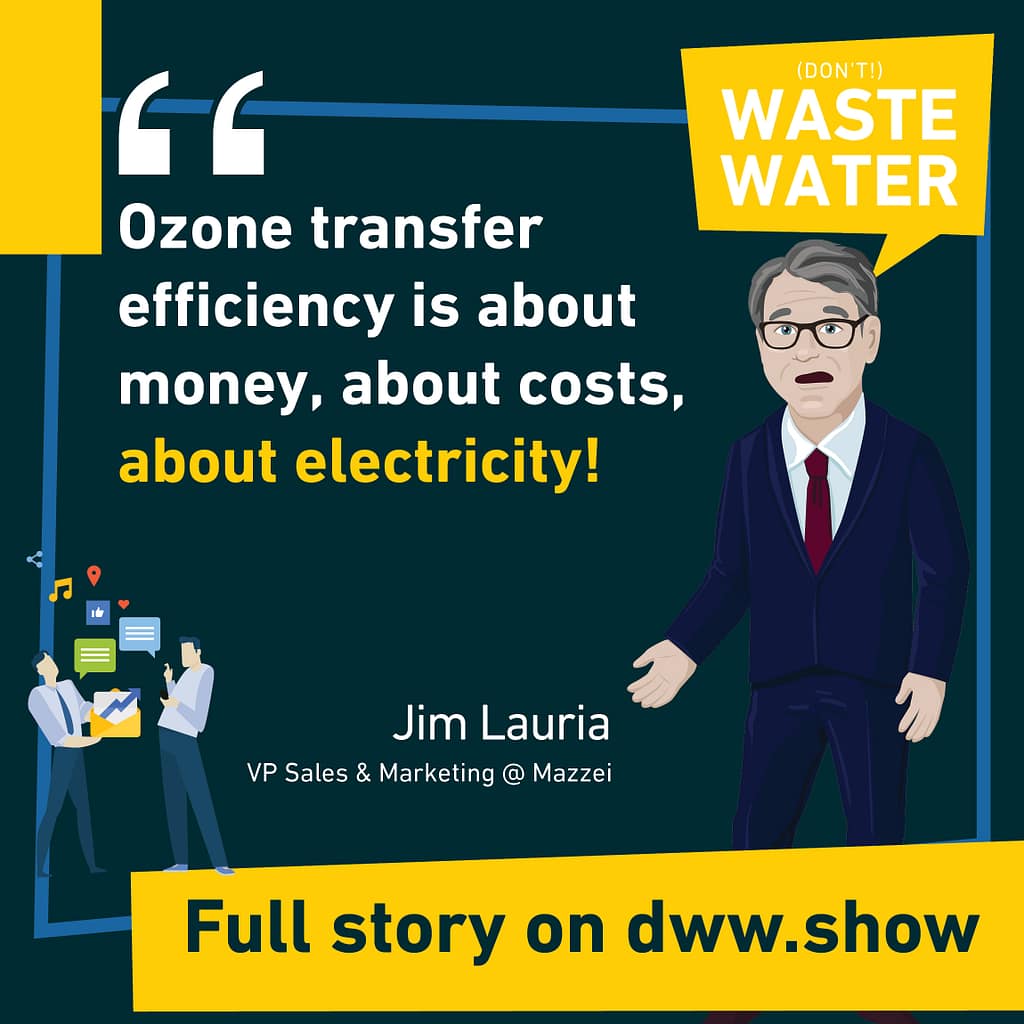
But we found that with the pipeline flash reactor with sidestream injection. It’s almost instantaneous seconds as compared to minutes with fine bubble diffusers. And the important thing to note about that is it’s been shown with a water research foundation. Look at this type of systems comparing the two systems that bromate formation is less because you’ve got less of this reaction time you with the sidestream.
Process as opposed to find old diffuser. And as you had explained in your ozone one-on-one, I mean, a big issue is around disinfection byproducts and bromate is considered a disinfection product.
Preventing bromate formation in your ozone diffusion system
Antoine Walter: So bromate is what happens when you oxidize bromine? So I think the English, correct. One is bromine.
Bromid is German, but basically it’s, you have that precursor in water, which is absolutely harmless. You oxidize it and then you get bromate, which is carcinogenic. And it’s, it’s cool that you come on that topic of bromate because I’m pretty sure you must have a scientific answer to my tricky question, because.
I mean, it’s not a secret. I’ve been in that business as well. I’ve been working with Ozonia and we had our own sidestream injectors. In the U S used to be Mazzei, but in Europe used to be different. And the main counter argument we were getting all the time was, you know, you’re mixing in the side stream a lot of ozone with not so much water.
So you’re putting a high dose of a zone on not so much water. And that must be creating bromate. And I mean, most like divination, nobody ever measured that, but steel, there was this belief that that would be creating more.
How new research improves from empiric data
Jim Lauria: Sure. Sure, sure. So that was what the water research foundation investigated. And it happened around the plant up in Canada that was using both sidestream injection and had another plant close by using the same water source that was using fine bubble diffusers.
And they found that the bromine formation was much, much less using sidestream injection plant. So, I mean, there is one. But you know, in practice it was found that in actuality, the bromate was formed a lot less using sidestream rather than find vocal diffusers.
Antoine Walter: I remember having this conversation with, Wim Audenaert from AM Team.
He actually just did a model out of that. I think he even called it AMozone, which is a nice pun, but. It’s interesting to see that finally concepts which have been theoretical or just guessing now turned into fact with the research you cite, which is just comparing one-to-one or having just a CFD modeling, telling you this happens and this doesn’t happen.
The perks of a Flash Reactor in your ozone diffusion system
So yeah. Really interesting. You mentioned that flash reactors, but is it something you also do at Mazzei or is that something which is a third party?
Jim Lauria: It’s our design, we build the entire system from the injectors to the pipeline flash reactors to the base of nozzle manifolds. And as I said, in order to get that tertiary mixing, we’ve also added some new elements to the pipeline, flash reactor called a PFL plus.
So you get that turbulent flow, which is important because what we found was a lot of water reuse plants. They change flows quite a bit. So sometimes they are running at, let’s say 10 MGD and other times they’re running at 50 mg. And so in order to make sure you’re getting the proper amount of ozone in, we decided that you needed some flow conditioning veins to be able into the pipeline flash reactor, to create turbulence, regardless of where the uh, flow rate was.
So turn down what we call turn down in the U S you’re taking that into account. And also, as I said, we’ve added this mixing group. A low amount of pressure drop, but also at the end of the pipeline flash react to, to make sure that you’re forcing any undissolved ozone, that would be at the crown of the pipeline, it back into the main flow of water.
The relative importance of diffuser, nozzle and reactor in ozone diffusion
Antoine Walter: Do you have like an idea of the ratio? If I see all those elements as individual workers, we have the first worker, which is the venture injector. The second worker is the nozzle. The third work is maybe the, the mixing elementary have in there in the flash reactor. Do you know which of them is doing most of the job?
Jim Lauria: Well, I think it’s pretty typical, right? For any process. That upstream is always gonna do the most work than the downstream. Right. And, you know, being you know, starting my career as a process engineer, I always look at that, that way. And in order for the downstream processes to do the work they need to do, you need to be as efficient as you can be upstream.
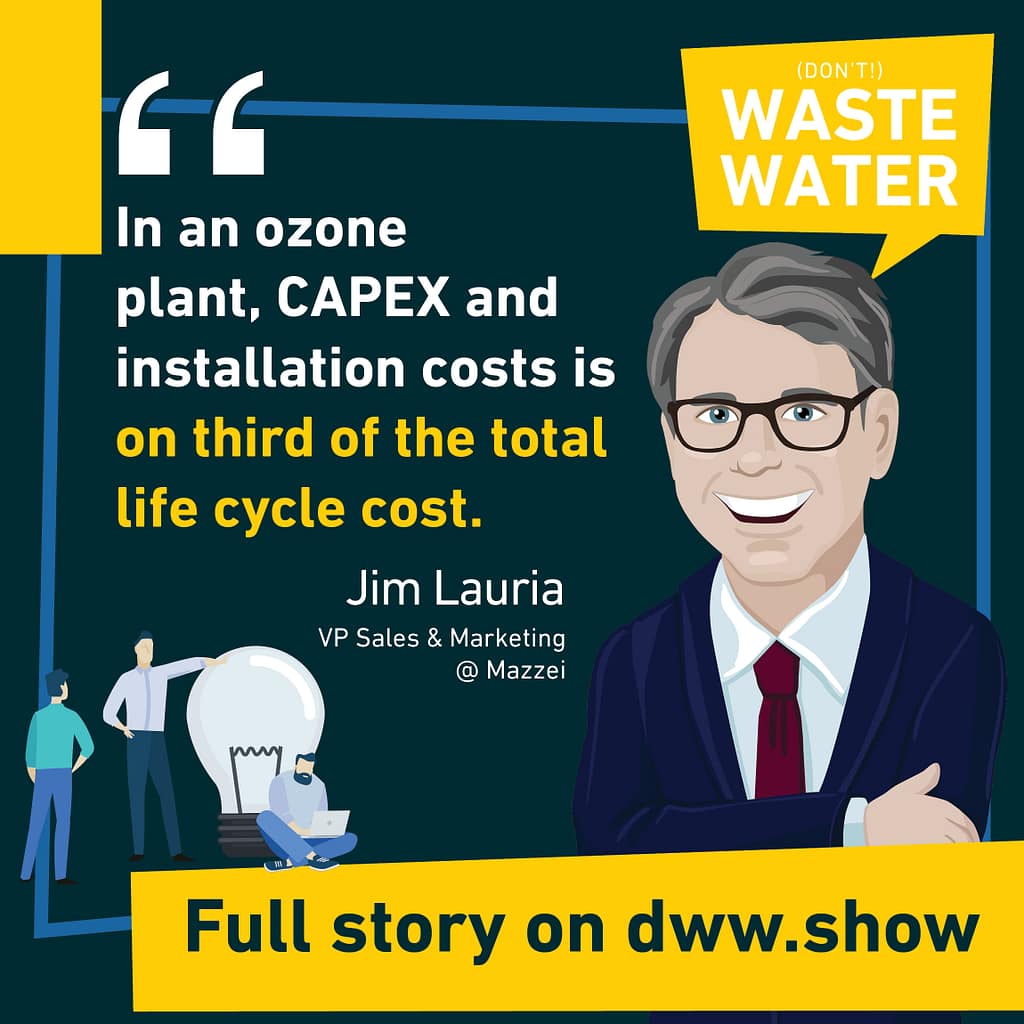
So the Ventura is doing most of the work, putting the gas in. Creating that concentration, the nozzles are doing the shearing and mixing of putting a lot of the mixing that concentrated ozone in, and then the downstream, either the flow conditioning veins, upstream of the pipeline flash reactor, or the mixing grid is doing some of the work.
So I’d say, you know, it’s like any other process. Most of the work is primary. Then the next is secondary and then final. And I like to use those times because the water treatment people, they understand that whole idea of primary, secondary tertiary treatment. Right. And it’s exactly that most of the work is done in the primary stage and then secondary and then, okay.
The importance of improved efficiencies in an Ozone Treatment Plant
Antoine Walter: Very true. Let’s go to the bone of that full story. Why do we speak about this efficiencies? Because usually when you, let’s say you test your water and you say, I need that much ozone, those, it’s not that much ozone that you produce in your generator. And then. Pour in the air, if you wish to do it, it’s how much ozone goes into the water.
And what you’re saying here is that with your system or a similar system that say aside from injection, you are, you have a better certainty that despite turn down ratio, despite existing configuration, you have an optimal transfer and actually fan, right? That’s what’s called mass transfer efficiency.
What is typically what you, what you reach with your size from injection systems? Let’s say the, the market average, if you’re using the, he was on jacuzzis. Yeah.
A Key Performance Indicator: Transfer Efficiency of the ozone diffusion system
Jim Lauria: Yeah. I wouldn’t say there’s, there’s a lot of different. In what you can achieve, maybe a little more efficiency using sidestream 95% transfer efficiency versus maybe 90, 92%.
But I think there’s a lot of things that need to be looked at. So first of all, it’s about money. It’s about cost, right? You’ve got to look at that. And so it’s about the biggest part of the transfer efficiency is about electricity because you’re producing ozone. Using electricity in the generator. And so if you can be more efficient about producing ozone in the generator, that’s energy cost.
And then you’re talking about maintenance. You’re talking about safety, a lot of those things around the operating costs of the system. And then of course, capital costs. We talked about that. And so capital costs is about footprint. Civil works size of the plant. We can locate the system. So it’s about CapEx and OPEX installation maintenance.
An overlooked factor: Process Automation
And there’s one other issue that, you know, people were just finding to find this out and it’s important because it all relates back to how the plan is going to operate overall is. The homogeneous nature of being able to put the ozone in the water, because as we’re going forward, we’re talking about real timelines.
And so the sensors that are going to be in there, they’re going to see a certain milligram per liter of ozone downstream to be able to control the plant and how much ozone you’re producing. Now with sidestream injection, you’re getting a lot lower coefficient of variation. So in other words, you see more of the water has, is a you, you get more ozone across a certain level of water.
Consistently then with the fine mobile, the fusers and that’s important because if that sensor is not seeing, what’s really there. It’s seeing less things actually in there, it’s gonna go back feedback to that generator to produce more ozone. When in actuality it doesn’t need it because it’s got enough ozone.
Conversely, if it sees too much at that given sensor, it’s going to go and tell a generator, Hey, we’ve got enough. Don’t produce anymore. And so w we’re about to publish a paper again, comparing to. Places that are using sidestream side by side with sidestream injection and there’s a lot less histories. So there’s a lot less hunting because you producing more of a homogeneous ozonated water screen.
Factoring in Maintenance and Turndown Ratio
With sidestream injection, then you all with find bubble diffusers and that, you know, the ozone generator doesn’t have to work as hard. So are you talking about maintenance issues? If it’s hunting and it’s looking for, where is it producing your electrical costs are going to be higher. And also you’re going to use more locks.
So across the board, again, it’s that whole idea of balancing upstream processes with downstream process. Feedback. It’s having for a process engineer to kind of try and figure out how to balance that stuff and make it work. Right.
There is little efficiency to still gain on ozone genrators
Antoine Walter: Actually you’ve touched something, which is an open question for me in that word of Zune, if you okay.
Every single IOA Congress, there is a new technology on the auto engineering, something which is even better, which is even more efficient. And I do believe that those ozone generators are probably very close to their asymptote. At some point they can become slightly better, but not that much better. And I was always wondering if the elephant in that room is in the control of all that system, because what you mentioned here is that you’re measuring.
dissolved ozone on at the outputs. And you’re saying it should be about point something and point something means it’s sufficiently treated yet. Not too much. But maybe the stuff you want to get out of that water or to treat or to oxidize out of that water reacts with the gaseous phase of ozone, which means also never has to be dissolved.
And you’re still pouring a lot of ozone just to dissolve it into something that doesn’t need to have ozone the solvent and maybe the other way around, maybe you’re targeting something which means higher levels. And I was always wondering, wouldn’t it be more efficient to look at the results? Instead of looking at the sort of thermometer, if you get my, my, my, my analogy.
Zooming out to improve the overall ozone system efficiency
Jim Lauria: So, you know, and that’s exactly right. So you have to look at it as a system, right? You can’t look at it as just, okay. The ozone generator does this, the injection system the transfer system does this, the locks does this. I mean, you have to look at it as a, as a total balance system. And again, it’s upstream and downstream processes and what’s doing.
And
Antoine Walter: I think that, that, again, speaks in favor of not doing your advertising here, but that speaks in favor of sidestream injection. Because if you’re working with fine bubble diffusers, your turndown capacity is limited by the fact that if you start having low volumes on your diffusers, the bubbles just become bigger.
And if they become bigger, the full fine bubble element just disappears. So probably this size room is bringing much more versatility, but you have to leverage it with the right sensors and the right control.
Automation of an ozone diffusion system used to have an (anachronic) bad rap
Jim Lauria: That’s exactly right. And that’s been a you know, for, for a long time, we’ve heard, well, you need more controls coming off of the generator, going to a sidestream injection system than you do with a fine bubble of fuser system.
And like it’s a bad thing. No, that’s a good thing because now you have more control and that’s what you want out of it. And so you’re, you’re exactly right. And yeah, it’s an important part of the equation.
Overcoming Ozone Design Habits
Antoine Walter: I was mentioning this habits element in France of using ozone made from air, but actually habits is something which is quite.
Everywhere in this sort of zone. I remember when we were building the first micropollutant and treatment plants in Switzerland with ozone treatment, we did a special design for the first one, thinking, you know what, we’re going to review that design and whatever it’s good. It’s going to stay. And what is wrong is going to be left and replaced.
And it turned out that those studies were conduced and we really saw, okay. We don’t only probably one hour contact time may be much shorter. Far sufficient, and maybe we need less per zone and we’ll need, and really all those results of the pilot plan. We’re taking and, and written in an official report.
And nevertheless, the five, six next plans, which were built in Switzerland are copy paste from the first one without taking one single improvement out of those studies. And there’s a reason for that. It’s that’s okay. You can improve it. But if you’re in the engineering office, you need to put your stamp on it and to say that works and no, you know, that.
It is risky to be an innovator
Works. So why would you take the risk to make it maybe better, but maybe impossible to operate? And I’m wondering from your experience, would you say it’s really a case by case every plant you look at what’s the best solution and you design that best solution or is it really off the shelf? Like that team has always done bubble diffuser.
We’ll just take it off the shelf and put it in the next.
Jim Lauria: Yeah, well, you’ve hit an important topic. It’s not just in the ozone portion of our water treatment field. It’s almost all of the different, aspects: it’s about innovation. Right Antoine and you know, to copy and paste, let’s face it. I mean, in a lot of other industries, if you make a mistake with an iPhone, you just throw it in the trash.
Mistakes have more severe consequences in the Water Industry…
Right. And you start again and no one can die from a bad iPhone. Right. And with water. W w we’re more cautious. Right. But it also kind of stifles innovation. And so one of the things that we did early on, I’d say maybe seven, eight years ago, is we really embraced computational fluid, dynamic modeling. And so we can do some modeling to find out will this work and will it cause issues?
Can we do what we say we’re going to do in a place. And the use of CFD modeling also has helped us where we didn’t exactly get what we thought we were going to get, but we could do pretty rapid troubleshoot. At a plant where we install the system and we were confident that we could fix the problem without a lot of trial and error of going back and forth, trying to find will this work, will that work?
… unless Software has your back!
No, we figured it out. Here’s what we need to do. We need to make this change. We need to increase the horsepower on this pump, whatever it might take. You know, you hit on an important point. And I think with CFD modeling with automated design software that can pull from other designs that were done in the past.
You know what I’m talking about here, our good friend Adam Tank
Antoine Walter: I knew you had to throw him in!
Jim Lauria: call them my podcast partner.
So, you know, and, and that’s a good thing. And so, you know, with software and digital technologies, we’re getting more innovation and taking, I wouldn’t say big risks, but we’re not as afraid. Say, let’s try a new design because we can prove it out in a model before we actually install it and it may go wrong.
How universal is CFD modeling in an ozone diffusion system design?
Antoine Walter: I know we can do CFD. And when I was working in a zone, which is now almost, I started almost 10 years ago, we already could do CFD, but because we could, we still didn’t do it. It was still a lot was done out of habits. I’m just wondering, what would you say is the ratio of plans that you see, which are read on like, Hey, come on.
That plan is similar to that other one. Jewish CFD. That’s just a copy paste.
Jim Lauria: Yeah. Well, I see it changing. I mean, I think more and more of a projects are requesting CFD models. To prove out what we’re trying to design. So I stay, I see the trend being that way. We feel strongly that if we’re going to give a performance guarantee on the ozone residual, the percent transfer efficiency, if we haven’t done a plant like that before then we insist that, or it’s tricky or there’s different aspects that, you know, Have some issues, then we’ll insist that CFD modeling be part of the project.
Looking at TOTEX (CAPEX + OPEX) rather than just capital investment
Antoine Walter: So it’s a reassuring point that things are evolving. And I take your word into, honestly, that’s really something positive. Now there’s a part where I’m still wondering how advanced the feeling is on the market. It’s something already alluded to the CapEx OPEX side of things, if I recall. Right. But you’re going to correct me straightaway because now I’m a bit rusty on that topic.
If I recall, right. An ozone plants. Is paying itself back. I mean, you’re, you’re, you’re, you’re re giving the same amount of money in operating costs compared to CapEx roughly every two to five years.
Jim Lauria: Yeah. I like to use the, you know, over a 20 year life cycle, if you look at that. Right. So, so that’s how I like to look at it.
I’d say the CapEx and installation costs is one third of the total life cycle cost. And op ex is two thirds. And I’d say that’s pretty standard for most water treatment systems.
You cannot afford to go cheap on an ozone system design
Antoine Walter: I think in the ozone, the word it’s maybe even more potent than in other ones, how you can go a bit cheaper in the design and harm quite a lot, your OPEX on the long run, or maybe it’s because I knew a bit better with use.
And then the other processes in Europe that started. I would say, not even a decade ago, that’s an attender. You would not only call for price, but also for a guarantee of your operating costs. Is that common
Jim Lauria: practice? Absolutely. Absolutely. I mean, it has to be what’s interesting is if you look at the people that are buying the equipment, at least in the north, The contractors or the ones that are buying the equipment and installing it.
The engineering firms are the ones that are specifying it do utility is the one that has to operate it. And they’re going to be stuck with the costs. As far as the capital and installation and over that 20 year life cycle period. So there’s a lot of moving parts and you’ve got to convince everybody that you need to look at that total lifecycle cost.
As part of it, I, I think it’s changed quite a bit in my time with Maisie. It’s been pretty standard. People are looking at those overall costs, the electricity, the chemicals that are being used, the maintenance that is being required for a particular process technology, the labor. Safety, right. Safety is a big thing with risk.
So I think people are looking at it more holistically than they have in the past. And that’s a good thing, but
The challenges and opportunities of the complexity of an ozone plant
Antoine Walter: since a complex matter, because you have so many levers on which you can play, you know, I always remember it was one of my first day when I started at Ozonia, I had a series of trainings and we had like three dinosaurs there in the company.
So Hans-Peter Fellmann, Walter Utinger and Martin Rothlin. I mean, the day they leave the company, I hope that they put all their brains somehow in the fridge that they still have access to that wealth of data. And they were showing a table, which was saying basically, you know, we have like this two, three, ozone generators in the range.
But if you look at it, it’s over 1 million possible combinations because you can play with people playing with the feed gas, you can be playing with the ozone diffusion system. You can be playing with so much elements. You made hidden advertising to transcend them, to add them just just minutes ago. And I think what they’re doing is amazing in terms of disruption, of the way we design our systems.
But it’s really something achievable to say, we can go to that level of complexity and find out what’s the best lever to play with. Or do you still need some.
A blessing or an impossible climb for Software Design?
Jim Lauria: I mean, it’s a matter of why we went to the deep dive into what data, right? So, I mean, we’ve got this 425, you mentioned 425 now. And not all those amazing plants.
Right. But we’ve got a good amount of them. And so taking that information and putting in some kind of insight, Because, I mean, you look at a wide range of applications, but they’re not all that different, there’s certain amount of the, this ones that are being used for iron and manganese precipitation.
This one’s for disinfection, there’s other ones for odor control color. So you take those and you put them in a model and you say, okay, here’s a good starting point. And so you’ve got more of a chance and inhumanity that. Computational fluid, dynamic modeling that you’ve done for pilot testing for other things.
I mean, that’s where we’re going to be, and it’s not going to be too long, you know, fall down the road. Oh,
The main applications of ozone treatments today
Antoine Walter: so of these 425 plans that you surveyed that you checked the data, what’s the percentage of them, which were drinking water plants, the
Jim Lauria: majority, because that’s where it started. Right. And so the majority is drinking water plants.
And again, I mentioned disinfect. Color removal, iron and manganese. So most of it more though now is being used for water, reuse. The trend is in that direction. So I’d say most of those plants that we, we, we surveyed were more drinking water plants, but now. We’re saying because water use is such a big issue now, and ozone has many good applications for we use and needs higher concentrations of ozone, of course, because you’re talking about organics, breaking down the organics so much more concentration of ozone that needs to be put in the water to do the job.
Antoine Walter: The reason why I’m pushing you in that corner is because I want to put my devil’s advocate hat last time, you know, I’ve been in your shoes somehow having ozone as my weapon and thinking, Hey, that can solve everything, maybe it can, but not do the most competitive price or approach or efficiency or whatever.
The challenges of ozone diffusion systems differ from one application to another
You know, we have seen many things happening and thinking that is going to be a breakthrough. And then it wasn’t like when, when Daegu, I think it was in the nineties, built a 300 kilogram plants of a zone to treat wastewater. We thought, Hey, it’s going to be the treatment for wastewater. And then it turned out it’s a really good treatment for niche applications, like reuse, as you mentioned, or micro pollutants or, I mean, this kind of emerging things, I think 20 years ago, Lots of people were investing into sludge reduction and saying, Hey, we have all that sludge in the, in the municipal wastewater treatment plants, we could be reducing them with ozone.
Yes, it works. But the reduction you’re winning there, isn’t quite close to something that makes it economical. And I think that’s going to be my last stupid example. There there’s this Mammoth plant in Montreal, which is a massive disinfection of wastewater. Because of the context of that water flowing into, into the St Laurent river.
Will ozone wastewater treatment become as large as drinking water?
And you have to, to protect the river from the organi content, which are present in a waste water treatment. But, but still, I don’t think that’s going to be the trend for the future, that all the waste with the Tritton and are going to be disinfected with ozone. So do you think ozone is still an emerging application or the fact that it’s around for over a century?
Lets us think. It is a solid thing, which we know is working, but probably not the hottest prospect among the processes, which are around
Jim Lauria: today. Well, so, you know, we started the, the discussion around me being a process engineer. So a process engineer realizes that nothing exists in a vacuum and each process lends itself to something, right.
You build a house, you don’t have a screw, just a screwdriver or just a hammer or just the store. You need all the tools. To build that house. You know, also it’s a good tool, but it’s not the only tool you can use for good water treatment applications. And so it’s got it. And also it has to exist in terms of what other processes can it be used with that starts to see the growing opportunities.
Process combinations create new opportunities
So you’ve got AOP, right? You use it in conjunction, ozone in conjunction with UV, with the hydrogen peroxide, with other oxidants, all the treatment technologies. They’re starting to use it with biologically active filtration where ozone does a really good job of breaking down those long chain organs.
Compounds and allowing those bacteria that’s on the substrate, whether it’s on carbon or other aggregates, it can digest these smaller. Portions particles and more easily. So I think that as we look at ozone, we can’t look at as, as just ozone does this, but how can it work as part of that treatment train, you know, before a filtration process, after a filtration process, before another oxidation process, and how does it combine with all those to do the job we’re trying to do at the end of the day?
Levelling the Field for crazy Ideas
Antoine Walter: Who ensures that we still leave some room for the crazy ideas, because you mentioned it wasn’t as good team player could be combined with so many possible treatments. And just to give you an example of what I’m thinking of here, I recall, I would say six, seven years ago, we did a study by injecting ozone as a pre-treatment in wastewater treatment to remove micro pollutants.
And the consensus was always one is going to target everything, but it’s micropollutants. It’s so heavily polluted at that stage. No chance that he targets the right thing. And it turned out that that worked pretty well to remove micropollutants, but I mean, it goes against your brain. It goes against your intuition.
So it’s hard to convince everyone to test out that thing that made absolutely stupid. Is there still a place for, for crazy ideas.
Jim Lauria: Yeah. Yeah. And then by you guys doing that, I think it opened up some ideas. So maybe ozone could be more effective if you remove the certain level of other organics that were in that wastewater that ozone would react with, with his other.
Counter-Intuitive Findings on where to place your ozone diffusion system
Pollutants that you could let through that prior treatment system and then ozone could target it without removing those, you know, the ones where ozone didn’t react with, that’s the kind of innovation that we need to think about. And so pilot testing modeling all these things are really good things to be able to discover where ozone might have its best application.
Antoine Walter: It’s amazing because “ozone Jim” knows his stuff because I’m taking you off guard with a question and you nail it. Because if I remember right, the reason why that works is because ozone and raw wastewater is a kind of advanced oxidation process. You’re also creating hydroxyl radicals. I have to say excellent answer.
Jim it’s been a pleasure to, to have this deep dive with you. I propose. To switch to the rapid-fire questions.
Rapid fire questions:
Antoine Walter: And I’m going to start with two very rapid question that I just added on the go, because I just wanted to push you in a corner. And I guess if people are listening to that after 50 minutes, they deserve to have you pushed in a corner. So my first rapid-fire question is, are you team vertical or team horizontal when it comes to ozone generators?
I said it was going to be tricky.
Jim Lauria: It’s not tricky for me. We don’t care how you generate the ozone. We, we just know that Mazzei injector has the best ozone diffusion system technology to put it into the water.
Antoine Walter: Perfect. Come back. Really perfect. Come back. So I guess you’re going to have the same comeback for my second question.
Are you “Team Ceramic” or “Team Glass”?
Jim Lauria: Same, same question. I mean, everybody has their preferences on how it’s produced, but again, if it can produce the ozone gas, then the idea is you need to get it into the water. That’s the, that’s the main thing. And we feel we’ve got the right technology to transfer into.
Antoine Walter: By the way. No, I’m side tracking. That’s not really rapid for a question. I’m just wondering, you know, the reason why for the muggles that wouldn’t understand why I’m pushing you in that way. I mean, there’s a very cool and there’s Xylem and Suez, which are the two big brands. And do, you know, retro sort of to a certain extent in Japan Mitsubishi, but most of them have a horizontal concept except Xylem, that has this vertical concept, which is claimed to be space-saving.
I mean, that was on the other end, so I can give you the contract argument, but I think it’s really at some point. Saving in terms of footprints and the glass versus ceramic is the dielectric which you have inside the tubes. So the glass, it’s just the support that you’re using to have the coroner discharge.
Behind the tricky bonus question: modular ozone generation systems
But the reason why I’m making this kind of precision right now, is that what I’ve seen emerging towards the end of my ozone times is this trend for modularity and generators that were made. A bit less energetically efficient, but we’re producing higher amounts of ozone at higher concentrations of ozone, at least.
And that you could just put everywhere in the plant because there was so small, so compact. Is it something which you see as a trend in the ozone world or is it really an issue in the
Jim Lauria: niche? Yeah. Well, I mean, we, we talked about that before sidestream injection. Well, you mentioned it more flexibility where you can turn a pump on or turn a pump off.
So it allows you to run a system more efficiently than find bubble diffusers. And so the same idea modularity with the ozone generators, all depends on, on the application. Of course.
Antoine Walter: Okay. I pushing you in the corner. Let’s go back to the rapid for a question and actually the second set of rapid fire questions.
What is your favorite part of the project?
Jim Lauria: I love the process design. I tell my sales team look, I don’t want salesmen salespeople. Sales women. I want processed detectives because in order to sell your technology, you really need to know what’s upstream of your technology and what’s downstream because that’s how you’re going to understand how to sell the benefits of what you’re bringing.
It’s safeguarding, that downstream process. And how was it interacting with the upstream process? So, you know, I, I like the process design part of the project and understanding the benefits that can accrue to the customer based on the technology. Very
Antoine Walter: interesting take and very valid point, I guess.
Is there something that you’re doing today in your job that you will not be doing in 10 years?
Jim Lauria: So I think we talked about it. I, I think with the design, there’s going to be less of the idea that we have to do it by hand, right. And less of the risk of not putting the right design out there and it’s all around and design. And I think that’s going to be the real case of. Not only me, but what my company is going to be doing.
And other, other companies in the water treatment field of, you know, using Excel spreadsheets to come up with a design of a particular model of a water treatment. So
Antoine Walter: that’s the third ad for Adam today.
Jim Lauria: I’m not advocating. I mean, there’s probably other software design. That’s going to be out there. And you know, Adam’s not going to be selling in a vacuum and I don’t have any interest in, in transcend water.
He’s just my friend. And, and, but, but I recognize the opportunities there and, you know, I am a big fan of CFD model and we have our own CFD modeling engineers. On staff. Amazing. And we’re a small company, but we we’ve put a lot of emphasis on that type of modeling for our customers.
Inside Joke: Referring Adam Tank, Jim’s Podcast Partner
Antoine Walter: Joking about the Transcend ad element! For the people who are not familiar with Transcend.
And yet you can go back to the feed of that podcast. I think that was season one, episode 17 when I had Ari Raivetz bits on that microphone to talk about transcend and going back to your previous answer about being processed detectives. I mean, if you are so busy with designing every single screw of your plans, you cannot afford to be a processed detective, just because.
So much hours in the day. And I’ll tell you that. I know that firsthand before every big tender we were submitting, I was just not sleeping, spending the night in the office to finish the offer. And when you are really giving the technical specs of, let’s say a compressor, you’re not thinking about how you could optimize a plan.
So I’m fully with you. I really hope that is something that’s going to move in the next step.
Jim Lauria: And you’re not visiting those plants that use your technology to find out how well they’re working, right. You’re not going and talking to customers that could retrofit. Your technology into, into their upgraded plants.
That’s the idea. It’s not so much picking and choosing which design software is the right one. It’s that this is where it’s going and it’s going to make all our jobs easier in that regard. But then we have to take that time that we would devote to doing our calculations and using that time for more productive things that we talk about is understanding.
You know how the benefits of technology can work in a given process.
What is the trend in the industry that you would like to see ending and disappearing forever?
Jim Lauria: Well, we talked about innovation. I mean, we have to be more innovative. You know, cut and paste. Isn’t going to work anymore. We as engineers in the industry have to really embrace that and and do everything we can to understand how we can speed up speed up innovation.
Ah, that’s, that’s a thing. I mean, we innovate, right. But can we do it faster? And, and, and with less trial and error, that’s, that’s the big
Can you name one thing that you’ve learned the hard way?
Jim Lauria: The one thing I’ve learned, the hard way. Is, I started my career as process engineer, but I moved into sales pretty quickly.
So, you know, I feel like I’ve taken those steps to understand going the hard way of working. And not being able to do the things that I’d like to do. You said, you know, the times you’ve sat up at night doing the design work. When I much rather would have been in at somebody’s plant, you know, tracing, tracing the lines and understanding, oh, this is where the water comes in from.
This is where the water goes out of. What are all the nuances talking to the operator? What are the issues he has? I would say. Being able to get out there. And actually, as, as some of my Israeli friends say, taste the air, right. You’re out there and actually seeing, so, rather than sitting behind a desk, actually getting out into the field.
And so the less time I’ve spent in the field has been not as beneficial as the time sitting behind a desk. Right.
Moving Forward: Meet Jim at the next IOA Conference
Antoine Walter: So Jim, it’s been a pleasure as always discussing with you. We are. Releasing that episode in August, 2021. So if you’re listening to that very far in the future, you cannot benefit of what I’m saying right now, but I think you’re going to the IOA conference towards the end of August.
Is that right?
Jim Lauria: Yes, it is. The August 30th into September, a lot of good presentation. I’m going to be given a presentation on ozone optimization. Kind of a lot of what we talked about is going to be part of that presentation. And I’m also giving a presentation, a very entertaining one, informative one on the use of ozone in cannabis.
Antoine Walter: No, you got me hooked.
Jim Lauria: I knew, I knew I would. I knew I would.
Antoine Walter: Is that a physical conference or is it going to be also digital?
Jim Lauria: No, it’s just a virtual conference. Virtual conference, right? End of August, August 30th through, into, into the beginning of
Following on Ozone Diffusion System matter (and much more) with Jim
Antoine Walter: September. And so for the one that wouldn’t be attending that conference, I guess I can still be direct them to your LinkedIn and probably to the water we’re talking about both
Jim Lauria: guests.
Absolutely. Absolutely. Or you can reach me directly@jlauriaatmaisie.net. Happy to engage. Anyway, LinkedIn is always a good place to engage with me. And you can also go on the IOA website and learn more about the conference as well, register there,
Antoine Walter: which just gives me an additional question, which has nothing to do with this closing, which would have been in the deep dive.
Bonus Question: How Global is Mazzei?
But I’m not very curious after, at that one, you know, I mentioned that when I was working for, for Ozonia, which now park part of Suez, I think all of our north American plants were with the. And none of the European ones are as in one word with Mazzei. And I’m just wondering, are you a north American company or are you a worldwide company?
Jim Lauria: So we’re a global company and obviously we’re, we’re concentrated in the U S. But it’s more about educating the rest of the world about the advantages of sidestream injection. And so, you know, that’s my goal. I’ve got a, a project team that’s working on, how can we advance this technology in Europe? And as you said before, I lived.
Previous lives before Mazzei. And I lived in Hong Kong for a number of years and I did a lot of work in Japan. So one of the things that I want to do in 2022 is going visit Japan and visit. Mitsubishi and Fuji to explain to them all concepts and some of these things that we’ve learned in north America and maybe be able to apply them with my project team in Europe and then with my own efforts in Japan.
So that’s part of our goals to, to really expand the, the concepts of of this technology into other parts of the world.
Conclusion
Antoine Walter: Well, that makes for a perfect conclusion, because that gives me the opportunity to give you an open invitation whenever you. A nice reference to talk about in Japan or in the middle of Gulag.
I’d be glad to see how the muggles of side injection react to what you bring them, because they might still not there. Wasn’t requisite. Thanks for that, Tim.
Jim Lauria: Thanks for listening to don’t wastewater. This podcast was brought to you by GF piping systems. Love this episode, head over to apple podcast, to subscribe, rate, and leave a review.
See you next time.
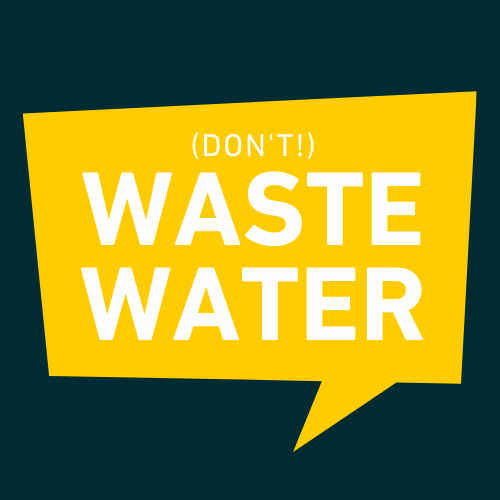
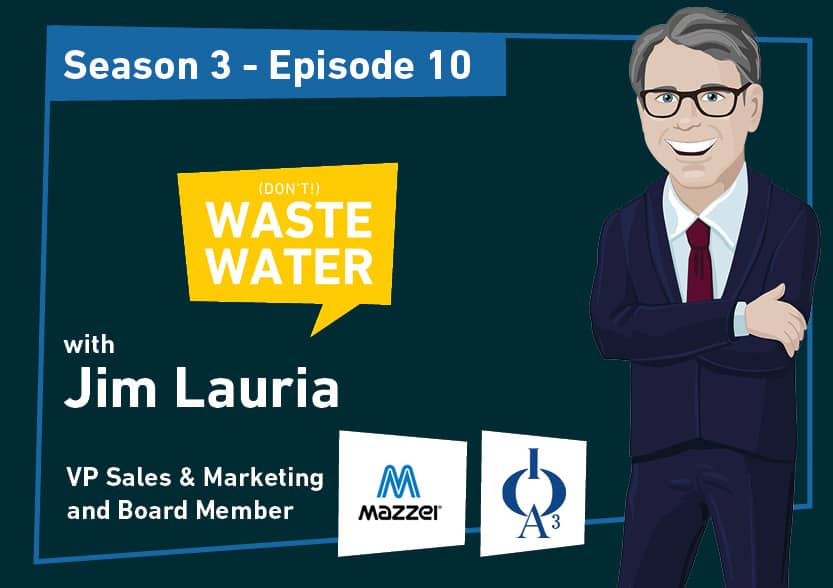

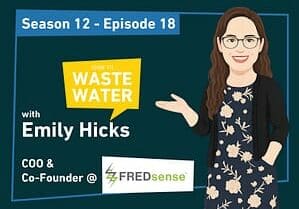
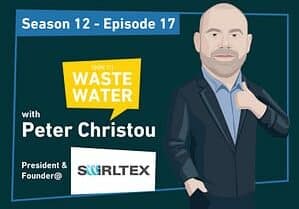
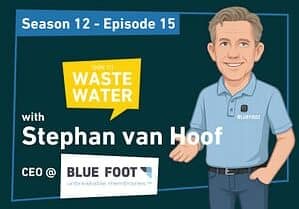
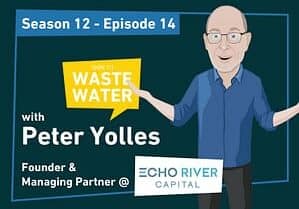
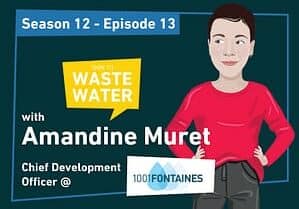

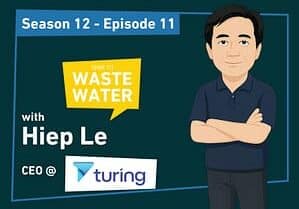
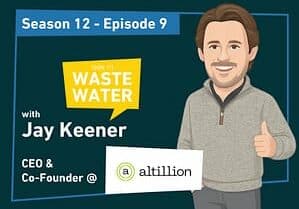
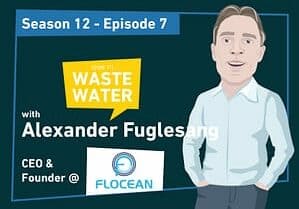
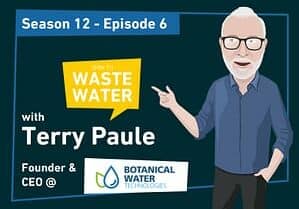
1 thought on “Choosing the Best Suited Ozone Diffusion System. What does Data Say?”